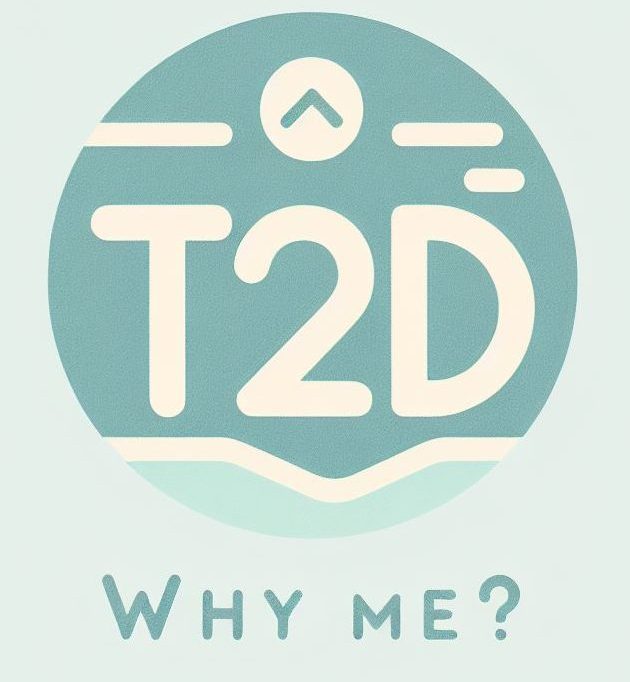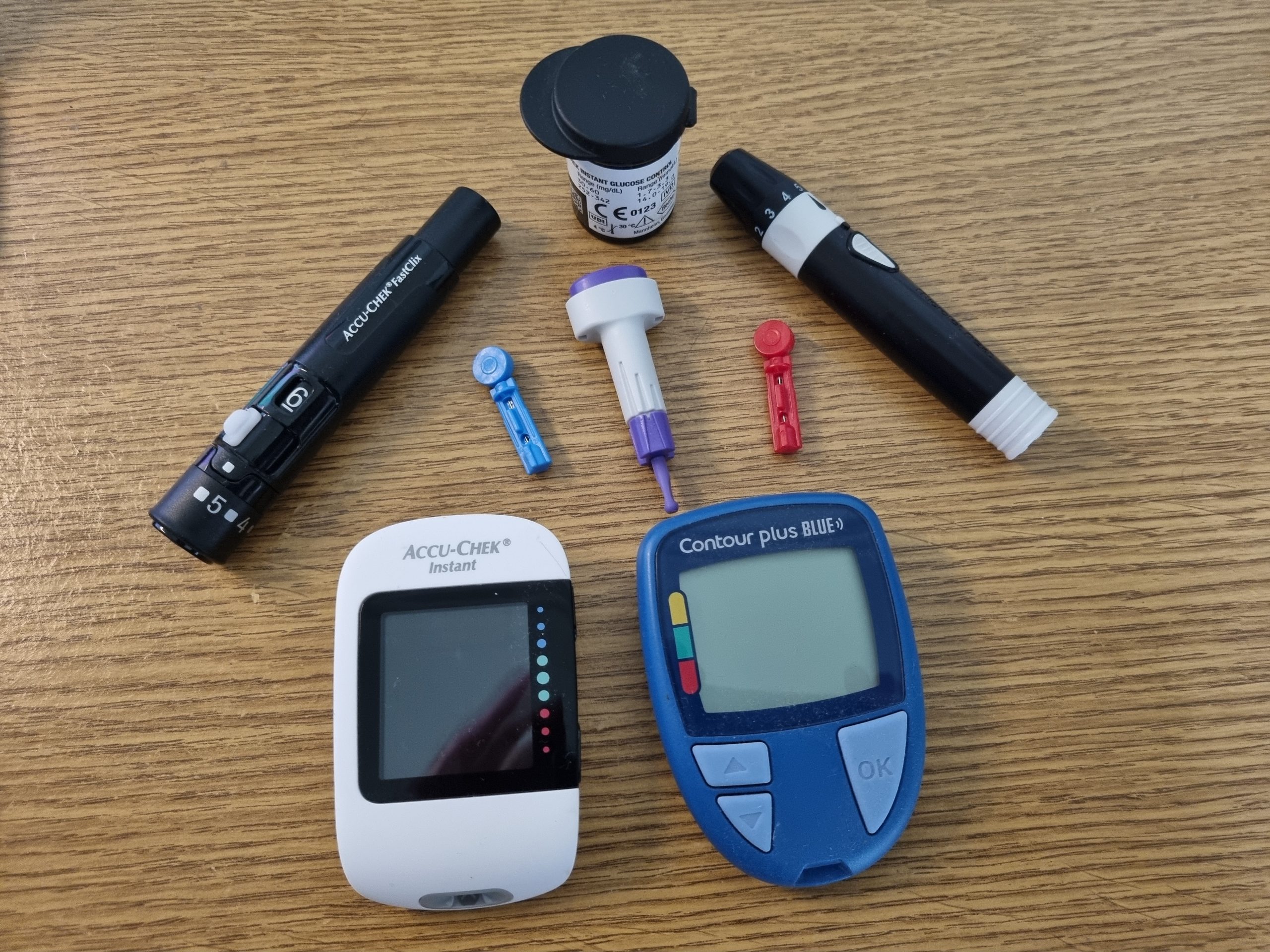When I was diagnosed with T2D, I was given a finger prick glucose monitor to use at home. My target was to have a reading of 7 mmol/L or lower immediately after getting up in the morning. About a year later, I was asked to take part in a trial of a new continuous glucose monitoring (CGM) device. As part of this trial I was also given a second finger prick device (different brand) and asked to take measurements 3 times a day for comparison the CGM. Of course this gave me the excuse to add measurements from my original device into my records for my own curiosity.
The results are shown in the graph below. The two fingerprick devices are represented by the blue and green lines with the CGM in red. Readings were taken over 14 days in total but I’ve only included the first 6 days here for ease of viewing. Readings are shown for morning, midday and evening (AM, MID and PM respectively). D1, D2 etc indicates the day. On the whole the results from the two finger prick devices were pretty similar. The one exception being the D1PM reading. Not sure what happened here but the same finger prick gave very different results on the two devices with the high value clearly looking to be an outlier (i.e. wrong for some reason). The CGM gave consistently lower reading than the finger prick devices but the trend is very consistent.

CGM v glucometer (fingerprick).
The difference between CGM and finger prick is that CGM measures glucose levels in interstitial fluid (clear watery fluid in the space between cells) rather than directly in blood. The level in interstitial fluid lags behind that in the blood system by around 15 minutes. This means that if blood sugar levels are falling then they should be higher in the CGM than in the blood and the other way round if levels are rising. The results I got show the CGM data as lower than the finger prick method on every occasion suggesting that it just measures a bit lower whatever. The full data hasn’t been published as far as I know but it would be interesting to see a larger set of results.
The nice thing about CGM however is that you can follow your glucose levels continuously through a mobile app. It was really interesting to see how exercise, particularly walking, can suppress blood sugar spikes after eating. Interestingly not all exercise has the same effect. A few months after taking part in the trial I obtained another CGM device on a free trial for 2 weeks. I wore this whilst going on a 2 week skiing holiday in Gressoney, Italy (highly recommended, we had a great time there). We are reasonably good skiers and I usually end up with aching muscles at the end of the day. The effect on my blood sugar however was not as dramatic as just going for a walk!
It turns out that this is quite normal. Intense activity can actually cause a temporary rise in blood sugar levels. There is some good information and advice on this topic on the Diabetes UK website at https://www.diabetes.org.uk/living-with-diabetes/exercise/blood-sugar-levels.
One bit of advice from Diabetes UK is that if you sit working at a desk for any length of time you should break away every so often to take a walk. I’ve been typing a way for a while now so I’m going to take their advice.

